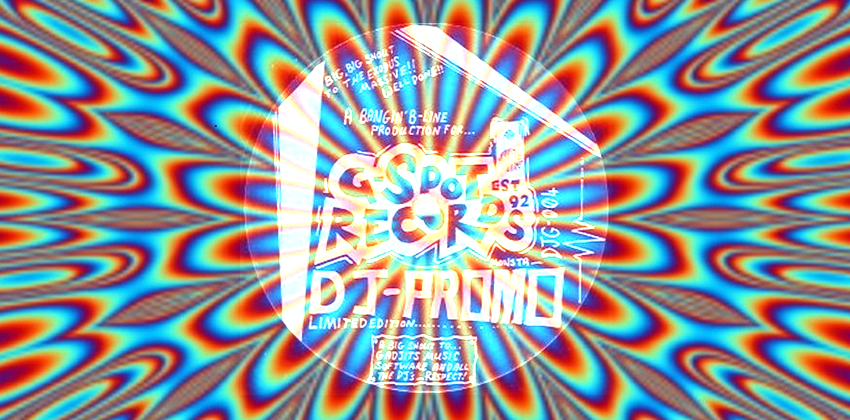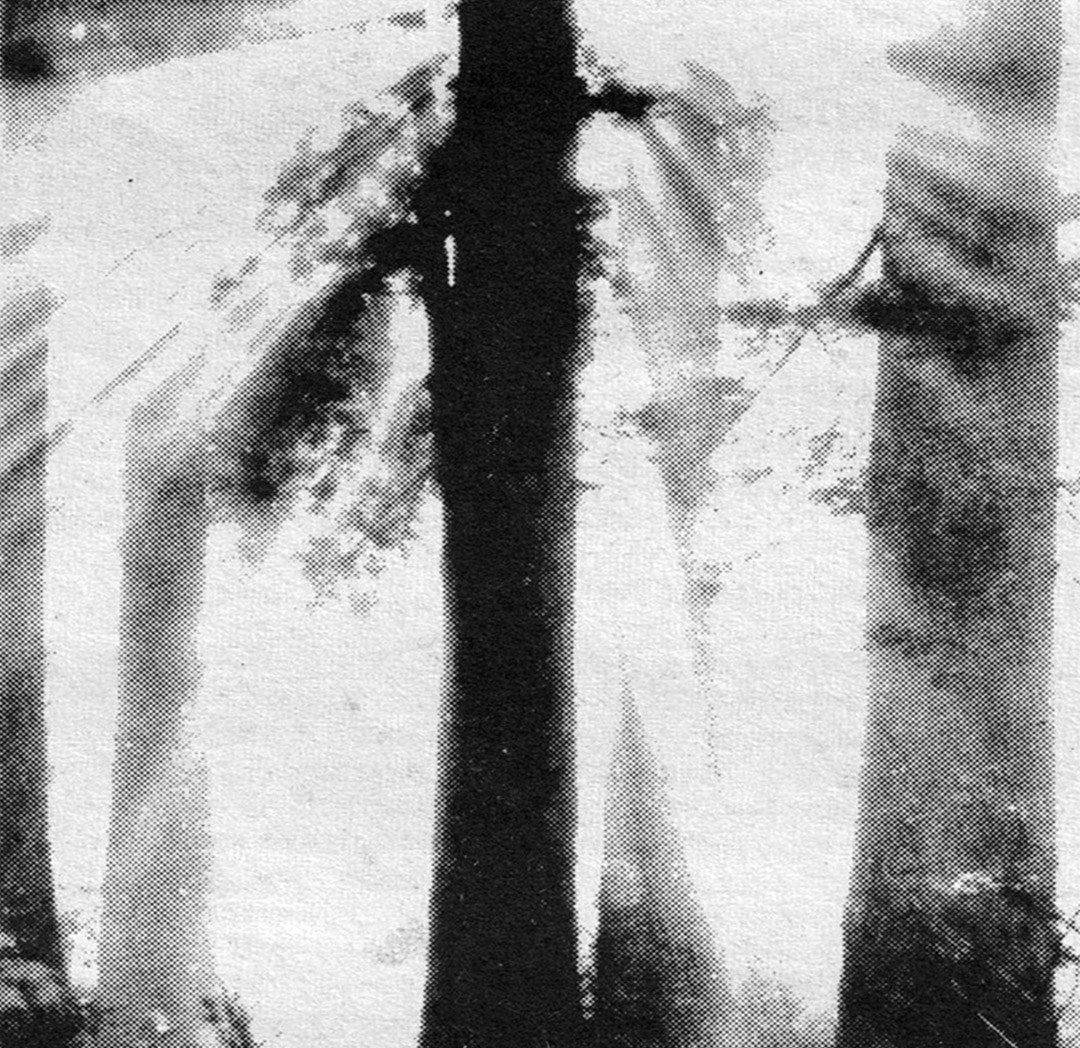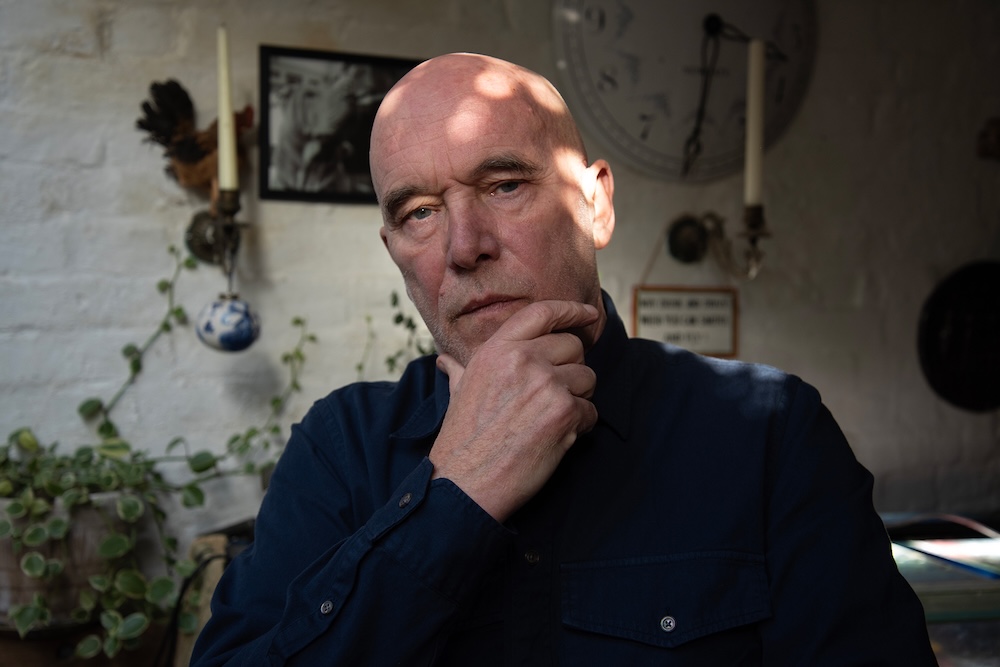Gone To A Rave #39: Graham Mew- The Invisible Man

A couple of weeks back I had the immense pleasure of interviewing Goldie for i-D. I’ve always been a bit ambivalent towards G as a DJ, but there’s no denying that as a producer he’s knocked out untold timeless (see what I did there) classics. It turns out that he’s the exact nutter in conversation that you’d hope him to be. I probably got the most lulz when he told me that the first time he went to Rage he was ‘sweating like a rapist’ because he refused to take his coat off. Equally memorably, (and this didn’t make the published piece) he told me he could remember the smell of 80s New York ‘like the smell of vagina on my fingers when I was in school’. Trust me, you don’t get quotes like that from a tech house producer.
As we were getting on, I asked him to tell me the name of a crazy bashment remix of Adam F’s Metropolis I’d heard him drop at Born & Bred a month back. He countered by bizarrely asking me if I wanted to know the time of my own death. I thought about it, and told him that on balance, probably not. In that case, he said, I’m not gonna tell you the name of the remix. I pointed out that the two things weren’t necessarily comparable; it’s doubtful that my knowing the name of a Metropolis remix is going to kill me, I said. Bollocks was his reply. Can’t say fairer than that.
Anyway, this is all a long preamble to a proper point. G was at pains to point out that the reggae roots of jungle may have been over-stated at the expense of other influences. I can see that he’s got a point – I love ragga jungle, and have often focused on it as the main driver behind the ’93-’94 explosion. It’s the old skool style that’s probably had the most traction over the years, particularly out of the UK with healthy Canadian and Italian scenes built around it.
“People think it was about reggae” Goldie protested “– it was a massive part of it, but it wasn’t all of it – it was made up of 5 cultures, jazz, blues, punk – if you look at Dillinja and Lemon Ds ‘Fuck Off’ that’s a punk tune – reggae, soul and hip hop, all genres that were supressed in the beginning, and we took em at their base levels, we took our favourite bits of all them things, and we made a terminator.”
This got me thinking about artists that don’t necessarily fit into the ragga jungle school, but were equally crucial to the development of the scene, and this in turn got me to thinking about Graham Mew, who as both Doctor G and The Invisible Man laid down some of the most influential early breakbeat science created, but tends to get lumped in with the often maligned 'intelligent' jungle scene. Outside of jungle circles he’s pretty much unknown, but to the heads he’s a legend.
Based in Oxford, which had a healthy rave scene going on in the early 90s, Mew’s first release was the Oxford Ardkore 12”, put out on his own G-Spot Records. The stand out track on the EP is The Beeline, a pretty straight up mix of breaks, heavy sub and a whispered voice saying ‘ecstasy’. The Beeline isn't too earth shattering – it uses the same tools as million other tracks, but you can already hear Mew's talent as an engineer- the bass is deep as fuck and the breaks cut over the top with a snapping clarity. I’ve managed to find an interview with Mew hosted on God Is No Longer a DJ – here’s what he had to say about the early days:
“When I first started making music (if that’s what you would call it!), at the start of ’92 with the “Oxford Ardkore EPs”, I was just releasing them on stamped white labels, using the catalog prefix “DJGxxx”. Technically, there was no label name at all for that first release. Then, with number two, I decided to use a proper label name and that was the first of the crazy hand-drawn labels. As I recall, my mate James Kearney thought of the “G-Spot Records” label name, he also drew the main logo – the rest of the label art was literally just me scribbling on a piece of paper, a few hours before I went to the cutting house! “
He followed up the first Oxford Ardkore EP with variations of the theme, refining his sound over another 4 EPs all released in 1992. You can hear a bunch of hardcore developments across them –Witness the B-Line shares more than a little in common with 2 Bad Mice productions, with the breakbeat chops similar to their Music Takes You remix, and the synth used almost definitely the same model they bashed out Bombscare on – whether Mew was innovating or imitating at this point is unclear, but the track stands up regardless.
The Hypnotizer is a sample heavy piano house number, based around the classic 'house is a feeling' acapella. On its b side you can hear Rocking Til Dawn, and it’s this deeper, more musical direction that would go on to define Mew’s sound – the bassline has moved past simple four note repititions into a fully realised sequence, there are more intricate breakbeat chops and the whole thing – hectic as it is – has a fully realised sense of melody.
Terror in the Jungle is one of those rare ’92 tracks with ‘jungle’ in the title – realistically it’s still hardcore, with the breaks running double time and none of the space that would go on to define jungle. It’s also got a curiously soft edge, the raspy synth noises have for the most been stripped out, and the main melody is almost delicate. It feels like Mew was reaching for the sound that he’d make his name with .
It was round this time that Graham met up with Jason Greenhalgh, otherwise known as Quiff. Quiff was an aspiring producer, and a regular on the Oxford free party scene. He’d had some equipment but ended up flogging it all to fund his partying. Then a chance meeting with Mew led to one of the greatest hardcore tracks of all time – as Quiff tells it-
“Luckily I met a guy called Graham Mew who had a Cheetah sampler and after a chance meeting at an Oxford free rave I convinced him to let me come round and do a track. The fourth tune I ever came up with round his little bedroom set up was Q Project ‘Champion Sound’, which went on to be a big early Jungle tune so we started a label called Legend with two other close friends to release it.”
http://blog.timespace.com/2011/04/dnb-duo-total-science-talk-sample-packs-and-studio-toys/
Quiff then went on to form Total Science with Paul Smith. From the above quote, it seems safe to assume that Mew had a hand in all of the early Q Project releases – the thumping Freestyle Fanatic definitely has his touch…
By the end of ‘92, Doctor G was played out. Mew had decided to switch up his sound to embrace the new half tempo bass of jungle. He went for a change of name, reimagining himself as The Invisible Man and switching G-Spot’s name to Timeless;
“ … You could say Doctor G was just finding his sound and having fun figuring out how to use the studio gear, as opposed to The Invisible Man, who was the more experimental “muso” with a more solid musical direction. Either way, The Invisible Man sound was more about pushing myself and the (albeit still quite limited) studio gear, both technically and musically, to create a sound with enough atmosphere and emotion, to hopefully enable it to stand the test of time. For me, energy alone is never really enough. I’ve always loved music that creates intense emotion and powerful atmospheres; to me that’s what music is all about. Then, if you can make it work on a dancefloor too, that’s the icing on the cake …”
His first release as The Invisible Man was the On A Mission EP, a 12” that pretty much lays the blueprint for an entire scene. A 5 track EP, the high point is The End. It opens with a three note reese bassline that has been rinsed countless times, and then proceeds to keep it sparse and deep. There’s the rolling amen Ray Keith built his career from clattering in half way through, and a moody bell sample that prefigures the discordant samples tech step would later focus on. As a track it sounds remarkable to this day, even more so when you consider it took most of the rest of the world nearly two years to catch up.
After On A Mission, Mew hits his purple patch. His next release followed on from The End – prophetically called The Beginning, it was a conclusive break from his days as Doctor G, and a fairly accurate vision of the future. Kicking off with the vocal sample that is recognisable from The Orb’s Perpetual Dawn, The Beginning tears into chopped up amens with glee that would make Remarc blush. Who knows where the fuck Mew was getting his ideas from- in ’93 he was pretty much out there on his own.
It was at this time Bukem came knocking, tapping Mew to drop a track for the newly formed Good Looking Records. Mew obliged with the Bell Tune, a cascade of melodic sparkle that lays the groundwork for the intelligent jungle scene, and an attempt to push drum n bass to see what was possible. Before intelligent DnB disappeared up it’s own arse, this was what it was meant to be, a distillation of 6am sun rising over a field free party vibes and the future UK techno of jungle. The claustrophobia of the Hackney jungle massive was stripped away –Invisible Man tracks aren’t packed with the gunshots, ragga chat or dog barks that inner city producers laced their tracks with; they’re more concerned with dreams of deep space futures.
Still in '93, Mew released the Skyliner 12", a pretty conclusive summery of how far he'd stretched ahead. It combined floating, cosmic orchestration with increasingly crazed breakbeat cut ups. Again, it has to be born in mind that Mew was doing this far, far before it became the norm. In '93, the majority if rave producers were still wacking a dodgy loop of a reggae bassline over a sped up funky drummer sample – Mew was heading off into infinity.


















Must Reads
David Holmes – Humanity As An Act Of Resistance in three chapters
As a nation, the Irish have always had a profound relationship with the people of Palestine
Rotterdam – A City which Bounces Back
The Dutch city is in a state of constant revival
Going Remote.
Home swapping as a lifestyle choice
Trending track
Vels d’Èter
Glass Isle
Shop NowDreaming
Timothy Clerkin
Shop Now